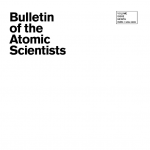The bright side of synthetic biology and Crispr
By , Shannon Fye-Marnien | January 2, 2018
Long-standing fears surrounding synthetic biology have recently been rekindled by the discovery of the gene-editing technique Crispr. As with previous advances in biology, Crispr is sometimes characterized as a blueprint for bioweapons development or bioterrorism, and it has elicited calls for increased control and regulation of science. But while it is important to examine the potential dangers of emerging technologies, reaching a balanced assessment of risks and benefits requires that technologies’ potential to improve human life be appreciated as well. Synthetic biology and Crispr offer a potentially enormous package of benefits, spanning from medicine to energy to agriculture and beyond. Discussions about the security and safety of synthetic biology and Crispr should not obscure these technologies’ potential to address a wide variety of complex and pressing problems. Read this new article in the January/February issue of our digital Journal.
Together, we make the world safer.
The Bulletin elevates expert voices above the noise. But as an independent nonprofit organization, our operations depend on the support of readers like you. Help us continue to deliver quality journalism that holds leaders accountable. Your support of our work at any level is important. In return, we promise our coverage will be understandable, influential, vigilant, solution-oriented, and fair-minded. Together we can make a difference.
Issue: Bulletin of the Atomic Scientists Volume 74 Issue 1
Keywords: Crispr, biofuels, bioreporters, gene editing, malaria, synthetic biology
Topics: Uncategorized
















